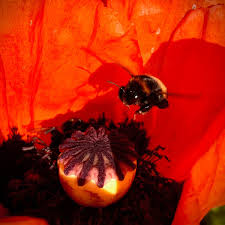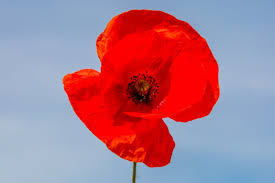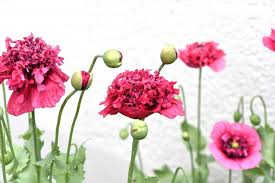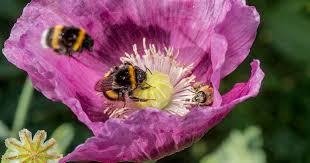Poppies are not only beautiful flowers that bring vibrant color to the garden, but they also provide an important food source for bees and a steady supply of seeds for gardeners. If you’re interested in growing poppies, you may be surprised to learn how beneficial they are both for pollinators and for your garden’s ecosystem.
Bees and Poppies: A Perfect Pairing
On a warm June morning, the sound of buzzing bees fills the air around the poppy patch in my garden. Honeybees are especially attracted to poppies, gathering pollen from a variety of poppy species. Poppy pollen is remarkably clean, containing few harmful fungi or mycotoxins, making it a safe food source for pollinators. In Europe, solitary bees like the poppy mason bee (Hoplitis papaveris) even line their nests with poppy petals, further emphasizing the connection between these flowers and bees.

Self-Seeding and Garden Convenience
One of the greatest advantages of growing poppies is that they readily reseed themselves when encouraged. By learning to identify their seedlings and allowing them to grow, gardeners can create a permanent poppy population without the need for constant replanting. Hardy annual poppies, such as corn poppies (Papaver rhoeas) and bread seed poppies (Papaver somniferum), are especially popular in vegetable gardens. These varieties grow upright, making efficient use of garden space, and their early blooming period leaves room to plant additional crops once the poppies finish blooming.
Types of Poppies to Grow
I began my poppy-growing journey with corn poppies, also known as field or Shirley poppies. Corn poppies are most famous for their bold red blooms, which symbolize love in parts of the Middle East. However, a vicar in London’s Shirley area discovered a variant with white-edged petals in the 1880s, and this led to the development of pastel-colored strains, now known as Shirley poppies.
When grown in fertile soil, corn poppies can produce up to 800,000 seeds per plant, which is comparable to the prolific seed production of many weeds. However, not all seeds will germinate due to dormancy or being eaten by wildlife, so gardeners need to scatter seeds generously to ensure a successful crop. For best results, sow poppy seeds from fall to early spring, and watch for the emergence of small rosettes of leaves in early spring—these are your poppy seedlings. You may need to protect them from rabbits with a wire cage until they establish themselves.

Bread Seed Poppies and Their Appeal
In my garden, I’ve cultivated pink bread seed poppies, which are not only attractive to bees but also produce edible seeds commonly used in baking. These poppies are legal to grow for ornamental purposes and are especially popular as bee-friendly flowers. Interestingly, some strains of bread seed poppies are so appealing to honeybees that they can be used as natural bee attractants. I’ve noticed that my local bees prefer the pink varieties over the red ones.
Bread seed poppies have smooth, blue-green leaves that make the seedlings easy to identify. These plants are highly cold-hardy and can tolerate frost. However, to encourage earlier and more abundant blooming, I recommend covering them with cloches or mulch during harsh cold spells. I’ve even had success growing them under a row cover tunnel during winter, and they thrived.

Extending the Poppy Blooming Season
To keep your poppy patch blooming well into summer, consider moving seedlings in early spring. While poppies don’t like being transplanted, they can adapt if the roots are kept intact. However, the transplanting process may result in a longer recovery period, which can extend your poppy season.
This extension is a win for both gardeners and bees. I use poppies as short-lived cut flowers, cutting them just as the buds begin to open. These flowers offer a few days of breathtaking blooms, after which the petals fall away to reveal the lantern-shaped seed pods. It’s no wonder that artists like Van Gogh and Monet were so captivated by the beauty of poppies.
By growing poppies, you can enjoy their beauty, attract pollinators, and harvest seeds for culinary use—all while supporting the local ecosystem and enhancing your garden’s biodiversity.
